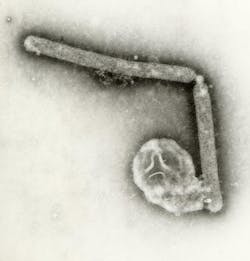A person in the United States has tested positive for highly pathogenic avian influenza (HPAI) A(H5N1) virus (“H5N1 bird flu”), as reported by Texas and confirmed by the Centers for Disease Control and Prevention (CDC).
This person had exposure to dairy cattle in Texas presumed to be infected with HPAI A(H5N1) viruses. The patient reported eye redness (consistent with conjunctivitis), as their only symptom, and is recovering. The patient was told to isolate and is being treated with an antiviral drug for flu. This infection does not change the H5N1 bird flu human health risk assessment for the U.S. general public, which CDC considers to be low. However, people with close or prolonged, unprotected exposures to infected birds or other animals (including livestock), or to environments contaminated by infected birds or other animals, are at greater risk of infection. CDC has interim recommendations for prevention, monitoring, and public health investigations of HPAI A(H5N1) viruses.
CDC is working with state health departments to continue to monitor workers who may have been in contact with infected or potentially infected birds/animals and test those people who develop symptoms. CDC also has recommendations for clinicians on monitoring, testing, and antiviral treatment for patients with suspected or confirmed avian influenza A virus infections.
Preliminary analysis of A(H5N1) viruses has not found changes that would make these viruses resistant to current FDA-approved flu antiviral medications, so these are believed to be effective against these viruses. Candidate vaccine viruses (CVVs) developed against related clade 2.3.4.4b viruses are available for vaccine manufacturing if necessary and preliminary analysis indicates that they may provide reasonable protection against H5N1 influenza viruses. Seasonal flu vaccines do not provide protection against these viruses. Analysis of virus samples is ongoing.

